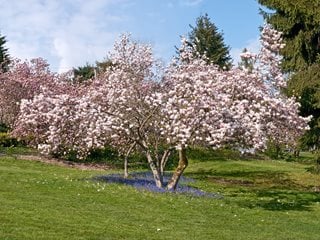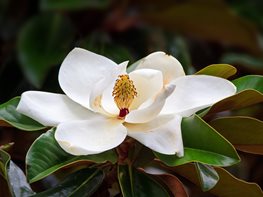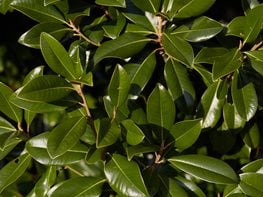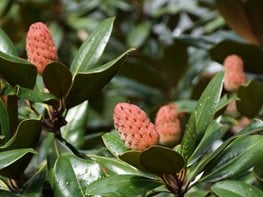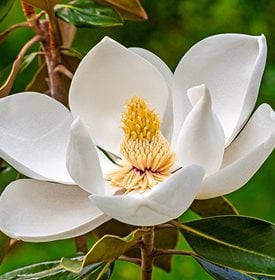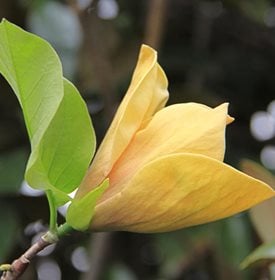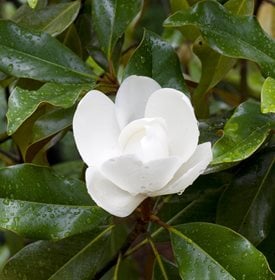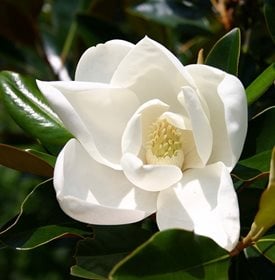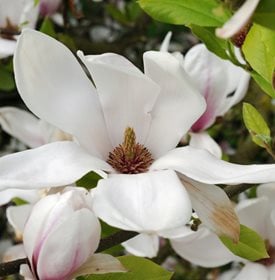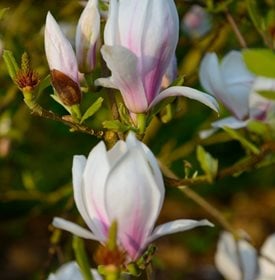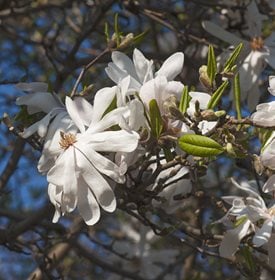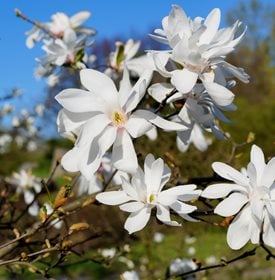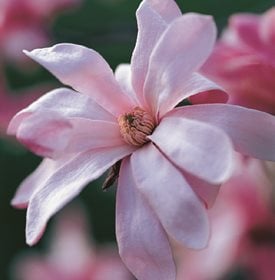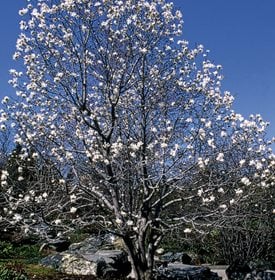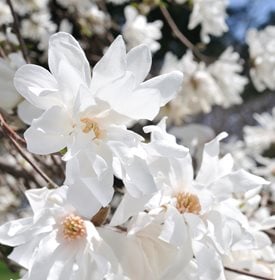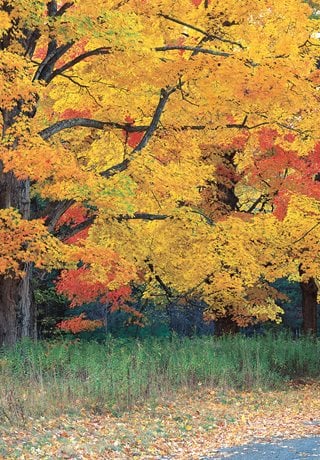Magnolia Trees
How to plant and care for saucer magnolia, southern magnolia and moreWith their showy flowers, intoxicating scent, and glossy green leaves, magnolias are one some of the most popular flowering trees.
On this page: Basics | Planting | Care Requirements | Magnolias Up Close | Facts | Pictures | Best Places to See Them
- Magnolia Basics
- Planting Magnolias
- Care Requirements
- Magnolias Up Close
- Magnolia Facts
- Magnolia Pictures
- Best Place to See Them
MAGNOLIA BASICS
The iconic southern magnolia (Magnolia grandiflora) is the most well-known. But magnolias, particularly the deciduous varieties, can be grown in almost any region of the U.S. From the tip of Florida to as far north as Maine and Washington, there's a magnolia that will grow in your garden.
Zones:
4-9
Size:
Magnolias come in a wide array of cultivars that can suit the scale of any garden. Sizes range from 15-foot shrubs to massive trees that can reach heights of 80 feet or more.
Bloom time:
On deciduous varieties, the flowers open in early spring before the leaves appear. They emerge from large pussy-willow-like buds that set during the previous growing season and remain throughout fall and winter. Evergreen types bloom heaviest during the transition from spring to summer. But, don’t be surprised if your magnolia tree reblooms in the summer or early fall. It’s not uncommon for sporadic blooms to appear on new growth.
Types:
Eight species of magnolias—two evergreen and six deciduous—are native to the United States. These native species have proven quite adaptable and many can flourish in gardens outside their natural growing zone.
Here are some of the most well-known types of magnolia trees:
- Southern magnolia (Magnolia grandiflora)
- Saucer magnolia (Magnolia ×soulangiana)
- Star magnolia (Magnolia stellata)
- Loebner magnolia (Magnolia ×loebneri)
- Sweetbay magnolia (Magnolia virginiana)
- Cucumber tree (Magnolia acuminata)
PLANTING MAGNOLIAS
When planting magnolias, pick the site carefully. They have wide-spread, shallow root systems that can be easily damaged during transplanting. Larger magnolias have branch spreads of 30 to 40 feet, making them useful as shade trees in larger yards. Compact, shrubby varieties are attractive in borders or as an ornamental tree in Asian gardens.
When:
Plant evergreen magnolias in early spring. Plant deciduous magnolias during autumn if you live in the South and during spring if you live in the North.
Soil:
Well-drained, rich in organic matter. Can tolerate clay, loam, or sandy soils.
Exposure:
Evergreen varieties grow best in full sun. Deciduous species prefer part shade. Where frost is possible after blooming begins, grow in a protected location.
MAGNOLIA CARE
Magnolia trees require little care and are resistant to many diseases and pests. They offer long life spans of 100 years or more given the right growing conditions.
Watering:
Most varieties tolerate hot summers and moderate drought, making them a resilient choice for gardens in harsher climates. However, younger trees should be watered regularly until fully established.
Pruning:
Magnolias typically need little pruning other than to remove crossed or damaged branches or for aesthetic reasons. The best time for pruning is soon after the tree has finished blooming, in either late spring or early summer. Pruning too late in the season will result in fewer blossoms the following spring.
Fertilizing:
If your magnolia is growing and flowering well, there is no need to fertilize. However, if your tree isn’t thriving or has yellow leaves, you should have your soil tested. Check with your local university’s extension to see if they provide soil testing and recommendations for adding supplemental nutrients. If you do decide to fertilize, wait until the spring after planting your magnolia, then apply a slow release fertilizer just as your tree starts to leaf out.
MAGNOLIAS UP CLOSE
While the magnolia is best known for its flowers, its foliage and fruit are also very attractive.
FLOWERS
Magnolia trees are prized for their large flowers that perfume the balmy spring air with a sweet, heady fragrance. Their magnificent tulip- or star-shaped flowers can be as large as saucers when fully opened. They range in color from pink, purple, white and even yellow. Some varieties have double blossoms.
FOLIAGE
Evergreen species, such as the southern magnolia, have large, glossy, oval-shaped leaves that remain attractive year-round.
MAGNOLIA FACTS
- Magnolias are believed to be the earliest known flowering plants, with their fossils dating back over 100 million years. Magnolia trees even existed before bees, so they rely on beetles for pollination. Instead of nectar, the flowers produce large quantities of pollen that the beetles use for food.
- The oldest trees on the grounds of the White House are two southern magnolias planted between 1829 and 1837 by Andrew Jackson. They were planted in memory of his wife, Rachel, who died shortly after he won the election.
- Magnolia flowers are actually composed of “tepals,” a combination of sepals and petals similar in size and shape, comparable to water lilies.
For more information and facts, see Plant Lust: Magnolia
MAGNOLIA PICTURES
BEST PLACES TO SEE THEM
To locate public gardens and arboretums that have noteworthy magnolia collections, check this map from The Magnolia Society International.
Enjoy garden travel? Check out our local self-guided day trips and other travel destinations. Sign up for our Garden Travel Newsletter to be alerted when new travel opportunities are available!
Related:
Flowering Trees for Residential Gardens
Trees for Privacy
Best Evergreen Trees for Residential Gardens
